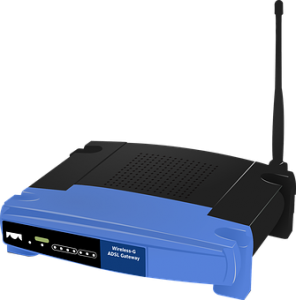Netgear Router Setup
Welcome to our comprehensive guide on the Netgear router setup process. Netgear, as a renowned brand in the field of network solutions, provides an array of routers suitable for diverse needs – from basic internet browsing to heavy-duty gaming and streaming. It is imperative to understand the Netgear setup process to enjoy the full range of benefits these routers offer.
Setting up your Netgear router is the first and most crucial step in creating your home or office network. A properly executed Netgear router setup ensures optimal performance, security, and connection stability. The Netgear setup process combines hardware installation and software configuration, facilitating seamless internet access to your connected devices.
It is important to note that the Netgear setup process isn’t limited to the initial installation of your router. It extends to regularly updating and fine-tuning settings to adapt to your evolving networking needs. As part of our commitment to assisting you with your Netgear router setup, this guide will explore these nuances, ensuring you can get the best out of your Netgear router.
In the following sections, we will probe into the specifics of the Netgear router setup process, providing you with all the necessary steps and tips to ensure a successful setup. Our guide aims to make the Netgear setup process an easier and more intuitive experience for you.
How to Setup Netgear Router Setup
The initial Netgear router setup is crucial in establishing your home or office network. Here’s a step-by-step guide to facilitate this process:
- Unboxing and Inspection: Ensure all necessary components are included in the package. This includes the Netgear router, power adapter, ethernet cable, and other accessories.
- Positioning Your Router: Position your Netgear router in a central location, free from obstructions for optimal signal strength. Consider the range of your router during this step of the Netgear setup.
 Powering up Your Router: Connect the Netgear router to a power outlet with the help of the power adapter and switch it on.
Powering up Your Router: Connect the Netgear router to a power outlet with the help of the power adapter and switch it on.- Connecting to Your Modem: Connect the Netgear router to your modem using the provided ethernet cable. This connection is vital for the Netgear router setup, allowing the router to receive an internet signal from your ISP.
- Connecting Your Devices: You can now connect your devices to the Netgear router. This can be done either via ethernet cable for wired connections or wirelessly for Wi-Fi-enabled devices. Use the default Wi-Fi network name (SSID) and password printed on the router for wireless connections.
- Accessing the Netgear Setup Interface: On a connected device, open a web browser and enter the router’s default IP address or setup URL. This will take you to the Netgear setup interface, where you can customize your router’s settings.
Remember, the initial Netgear router setup is only the beginning. Periodic maintenance and fine-tuning are necessary as part of the ongoing Netgear setup process to keep your network performing optimally and securely. If you need further guidance during your Netgear router setup, Netgear’s support resources are readily available.
How To Setup Netgear Router Without CD:
Moreover, people also can perform Netgear router setup without CD. Let us know about it. Setting up a Netgear router without a CD is an effortless process that allows users to get their router up and running quickly. Users can follow the above process to setup Netgear router without cd.
How to Configure Netgear Router Settings:
Customizing your Netgear router settings allows you to tailor the network to your specific preferences and ensure optimal performance and security. Here’s a closer look at some key settings you can customize:
- Accessing Router Settings: To access the Netgear router settings, open a web browser on a connected device and enter the router’s default IP address (such as “192.168.1.1” or “192.168.0.1”) into the address bar. Log in using the router’s admin credentials.
- Wi-Fi Network Name (SSID): In the Netgear router settings interface, navigate to the wireless settings section. Here, you can change the default SSID to a unique name representing your network. Having a distinct SSID enhances network visibility and minimizes confusion in crowded Wi-Fi areas.
- Wi-Fi Password: You can modify the password in the wireless settings section. Creating a strong, secure password is essential to prevent unauthorized access to your network. Use a mixture of the alphabet, digits, and special characters for enhanced security.
- Security Settings: Netgear routers offer various security options to safeguard your network. You can choose the appropriate security protocol (e.g., WPA2-PSK) and encryption type (e.g., AES) for your Wi-Fi network in the router settings. These settings ensure that data transmitted over the network remains protected.
- Guest Network: Many Netgear routers support a guest network feature. In the settings interface, you can enable and configure a separate guest network with its own SSID and password. This allows visitors to connect to the internet without accessing your primary network.
- Parental Controls: Netgear routers often include parental control features. You can set up restrictions and filters to manage internet access and content for specific devices or users in the settings. This helps ensure a safe online experience for children or restricts access during certain hours.
- Firewall and Port Forwarding: Netgear router settings allow you to configure firewall settings and set up port forwarding for specific applications or services. This enables secure access to devices or services from outside your network.
Remember to save any changes made to the Netgear router settings. Regularly reviewing and updating these settings as needed helps maintain a secure and efficient network. Customizing the router settings allows you to create a personalized network experience that meets your requirements.
How to Perform Netgear Firmware Updates:
Firmware acts as the operating system of your Netgear router, controlling its functionality. Netgear regularly releases firmware updates to address vulnerabilities, improve performance, add new features, and enhance compatibility with the latest technologies. Keeping your router firmware up-to-date is crucial for optimal performance, stability, and security.
Netgear firmware updates play a crucial role in maintaining your router’s performance, stability, and security. It is vital to regularly update the firmware to benefit from the latest enhancements, bug fixes, and security patches. Here’s a step-by-step guide on checking for and installing Netgear firmware updates:
- Checking for Netgear Firmware Updates: To check for firmware updates, access the Netgear router settings interface using the default IP address (e.g., “192.168.1.1” or “192.168.0.1”) and log in using your admin credentials. Look for the “Firmware Update” or “Router Update” section within the settings menu. Here, you can manually check for available firmware updates.
 Downloading Netgear Router Firmware Update: If a new firmware version is available, download it from the official Netgear support website. Locate the firmware update designed explicitly for your router model. Ensure that you download the correct firmware version to avoid compatibility issues.
Downloading Netgear Router Firmware Update: If a new firmware version is available, download it from the official Netgear support website. Locate the firmware update designed explicitly for your router model. Ensure that you download the correct firmware version to avoid compatibility issues.- Installing Netgear Firmware Update: In the router settings interface, navigate to the firmware update section. select the downloaded firmware document and begin the installation process. It is crucial to follow the on-screen instructions carefully and avoid interrupting the update process. Interrupting a firmware update may lead to a bricked router.
- Verifying Netgear Router Firmware Update: Once the firmware update is complete, the router will restart to apply the new firmware. After the restart, proving that the Netgear Router Firmware update was successful is recommended. Reaccess the router settings interface and confirm that the firmware version displayed matches the updated version you installed.
Regularly checking for and installing Netgear firmware updates is essential to ensure your router remains secure and performs optimally. These updates provide necessary bug fixes, performance enhancements, and security patches. Following these steps, you can keep your Netgear router up-to-date with the latest firmware, safeguarding your network and enjoying the best possible router performance.
Conclusion:
Setting up your Netgear router is crucial for optimal performance and security. We have provided a comprehensive guide to help you through the process. For further details and troubleshooting tips, we recommend users read our Netgear Support article to understand more about the Netgear router.

